#but it sort of literally was
Explore tagged Tumblr posts
Text
did you know? if you do your laundry you can get your clothes back
#fascinating stuff. let’s see if i (person with the worst executive dysfunction when it comes to doing laundry) remember it#i literally have this issue where i’ll let dirty clothes pile up in the laundry basket for an entire month#like it takes me that long to get around to it#and then- who would’ve thought- i find that i don’t have anything good to wear. strange!#finally did it last night and i’m like ohhh that was so difficult but the payoff finally#augh#peach rambles#hall of fame i guess#shut up about socks. idc.#this was a fun positivity post of sorts it’s about overcoming executive dysfunction#derailing into jokes about losing socks is. it’s not horrible but just boring and annoying#it was supposed to be celebration!! and encouragement!!!
45K notes
·
View notes
Text



streamer au ??????? video game au ???
#never stop blowing up#dimension 20#d20#clay does art#it’s literally so good. it’s so good#important notes:#it’s a viddey game#they play as their jumanji counterparts. this game is in my mind is sort of like hitman but multiplayer for a story arc.#with. somehow with a proximity chat or like phasmophobia walkie talkies#they may or may not all stream but dang certainly does#usha does not like her characters appearance and no one can walk her through changing it#no id#dimension 20 nsbu
10K notes
·
View notes
Text
What does life in North Korea look like outside of Pyongyang? 🇰🇵
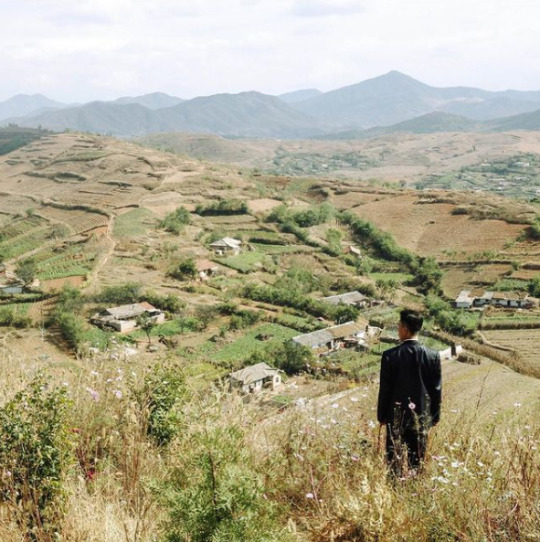
Hey, I'm back again with a very scary "tankie" post that asks you to think of North Koreans as people, and to consider their country not as a cartoonish dystopia, but as a nation that, like any other place on earth, has culture, traditions, and history.
Below is a collection of pictures from various cities and places in North Korea, along with a brief dive into some of the historical events that informs life in the so-called "hermit kingdom."
Warning: very long post
Kaesong, the historic city
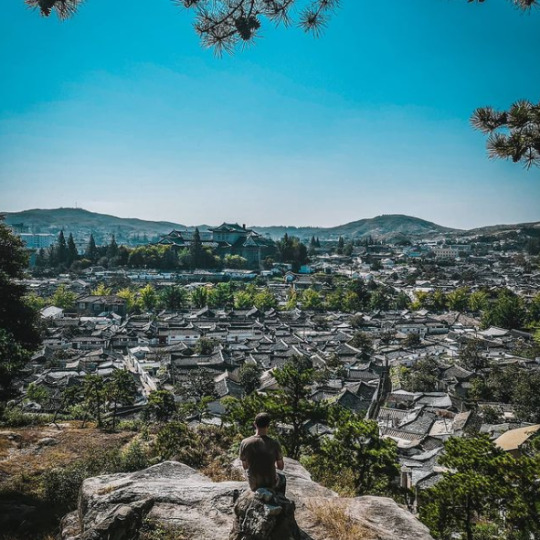
Beginning this post with Kaesong, one of the oldest cities in Korea. It's also one of the few major cities in the DPRK (i.e. "North Korea") that was not completely destroyed during the Korean war.
Every single city you'll see from this point on were victims of intense aerial bombardments from the U.S. and its allies, and had to be either partially or completely rebuilt after the war.
From 1951 to 1953, during what has now become known as the "forgotten war" in the West, the U.S. dropped 635,000 tons of bombs over Korea — most of it in the North, and on civilian population centers. An additional 32,000 tons of napalm was also deployed, engulfing whole cities in fire and inflicting people with horrific burns:
For such a simple thing to make, napalm had horrific human consequences. A bit of liquid fire, a sort of jellied gasoline, napalm clung to human skin on contact and melted off the flesh. Witnesses to napalm's impact described eyelids so burned they could not be shut and flesh that looked like "swollen, raw meat." - PBS
Ever wondered why North Koreans seem to hate the U.S so much? Well...
Keep in mind that only a few years prior to this, the U.S. had, as the first and only country in the world, used the atomic bomb as a weapon of war. Consider, too, the proximity between Japan and Korea — both geographically and as an "Other" in the Western imagination.
As the war dragged on, and it became clear the U.S. and its allies would not "win" in any conventional sense, the fear that the U.S. would resort to nuclear weapons again loomed large, adding another frightening dimension to the war that can probably go a long way in explaining the DPRK's later obsession with acquiring their own nuclear bomb.
But even without the use of nuclear weapons, the indiscriminate attack on civilians, particularly from U.S. saturation bombings, was still horrific:
"The number of Korean dead, injured or missing by war’s end approached three million, ten percent of the overall population. The majority of those killed were in the North, which had half of the population of the South; although the DPRK does not have official figures, possibly twelve to fifteen percent of the population was killed in the war, a figure close to or surpassing the proportion of Soviet citizens killed in World War II" - Charles K. Armstrong
On top of the loss of life, there's also the material damage. By the end of the war, the U.S. Air Force had, by its own estimations, destroyed somewhere around 85% of all buildings in the DPRK, leaving most cities in complete ruin. There are even stories of U.S. bombers dropping their loads into the ocean because they couldn't find any visible targets to bomb.
What you'll see below of Kaesong, then, provides both a rare glimpse of what life in North Korea looked like before the war, and a reminder of what was destroyed.
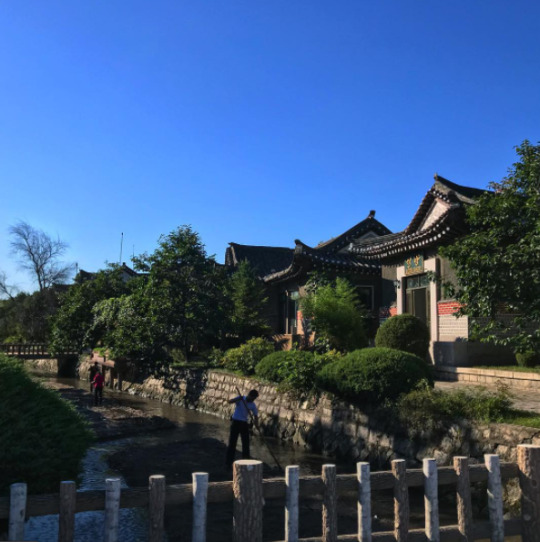
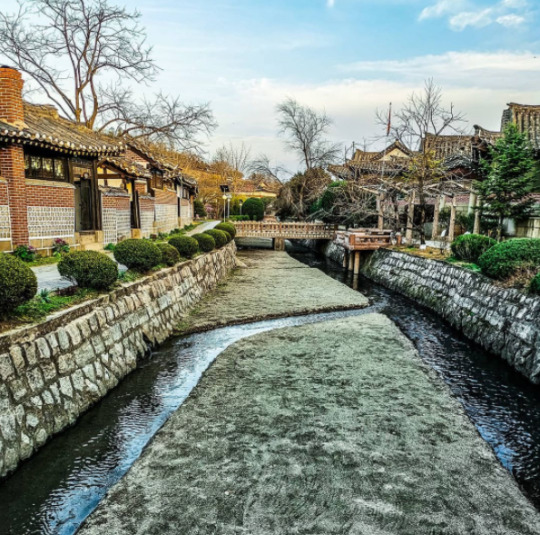
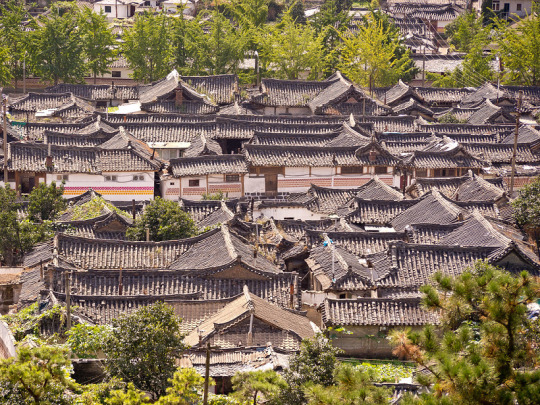
Kaesong's main street, pictured below.
Due the stifling sanctions imposed on the DPRK—which has, in various forms and intensities, been in effect since the 1950s—car ownership is still low throughout the country, with most people getting around either by walking or biking, or by bus or train for longer distances.
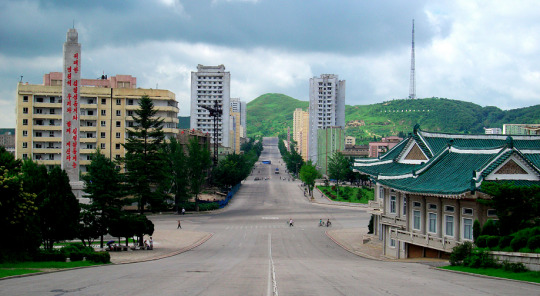
Kaesong, which is regarded as an educational center, is also notable for its many Koryŏ-era monuments. A group of twelve such sites were granted UNESCO world heritage status in 2013.
Included is the Hyonjongnung Royal Tomb, a 14th-century mausoleum located just outside the city of Kaesong.
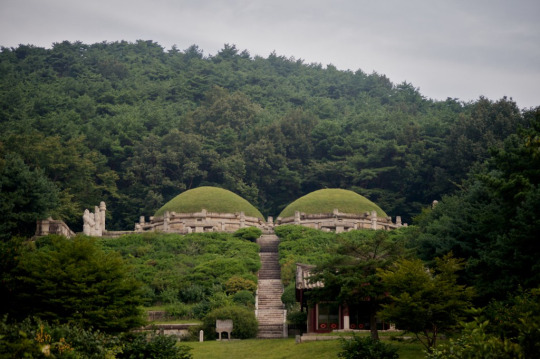
One of the statues guarding the tomb.

Before moving on the other cities, I also wanted to showcase one more of the DPRK's historical sites: Pohyonsa, a thousand-year-old Buddhist temple complex located in the Myohyang Mountains.
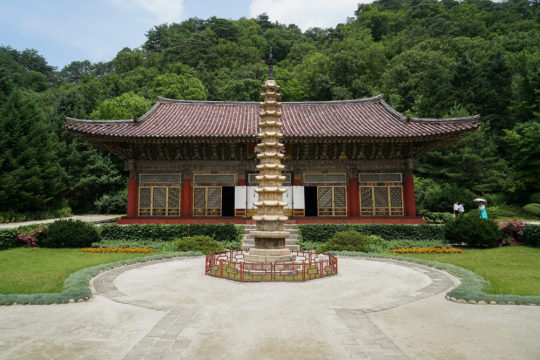
Like many of DPRK's historic sites, the temple complex suffered extensive damage during the Korean war, with the U.S. led bombings destroying over half of its 24 pre-war buildings.
The complex has since been restored and is in use today both as a residence for Buddhist monks, and as a historic site open to visitors.


Hamhung, the second largest city in the DPRK.
A coastal city located in the South Hamgyŏng Province. It has long served as a major industrial hub in the DPRK, and has one of the largest and busiest ports in the country.
Hamhung, like most of the coastal cities in the DPRK, was hit particularly hard during the war. Through relentless aerial bombardments, the US and its allies destroyed somewhere around 80-90% percent of all buildings, roads, and other infrastructure in the city.
Now, more than seventy years later, unexploded bombs, mortars and pieces of live ammunition are still being unearthed by the thousands in the area. As recently as 2016, one of North Korea's bomb squads—there's one in every province, faced with the same cleanup task—retrieved 370 unexploded mortar rounds... from an elementary school playground.
Experts in the DPRK estimate it will probably take over a hundred years to clean up all the unexploded ordnance—and that's just in and around Hamhung.
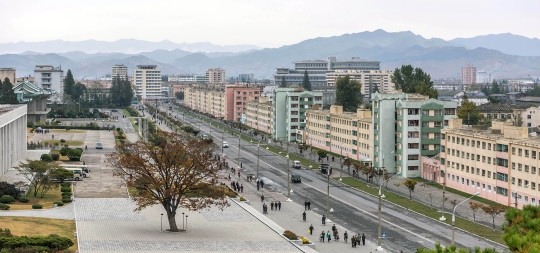
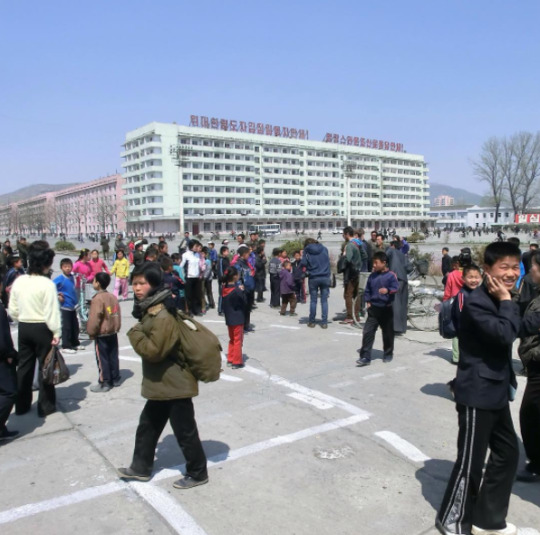
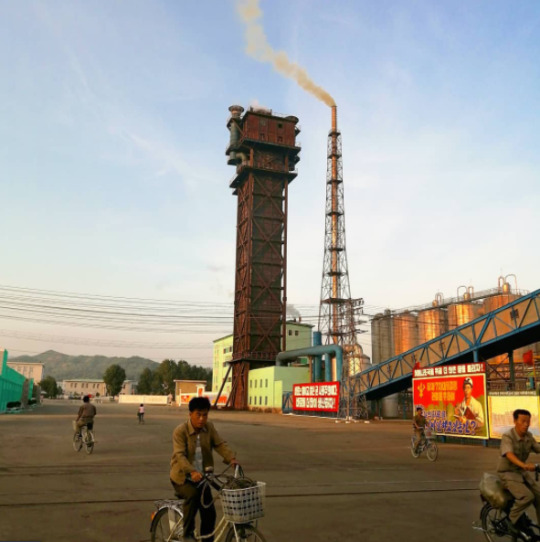
Hamhung's fertilizer plant, the biggest in North Korea.
When the war broke out, Hamhung was home to the largest nitrogen fertilizer plant in Asia. Since its product could be used in the creation of explosives, the existence of the plant is considered to have made Hamhung a target for U.S. aggression (though it's worth repeating that the U.S. carried out saturation bombings of most population centers in the country, irrespective of any so-called 'military value').
The plant was immediately rebuilt after the war, and—beyond its practical use—serves now as a monument of resistance to U.S. imperialism, and as a functional and symbolic site of self-reliance.
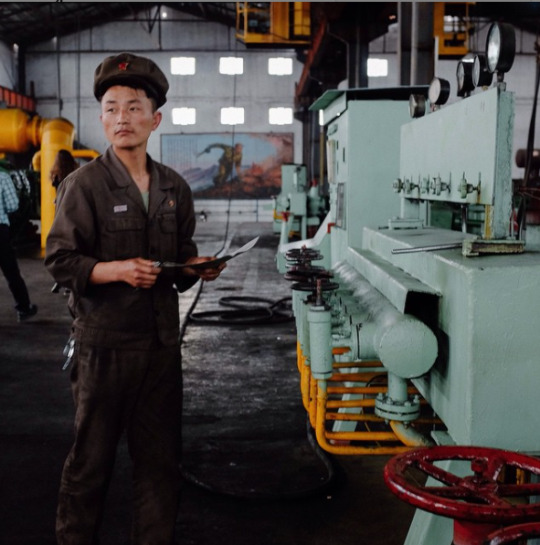
Chongjin, the third largest city in the DPRK.
Another coastal city and industrial hub. It underwent a massive development prior to the Korean war, housing around 300,000 people by the time the war broke out.
By 1953, the U.S. had destroyed most of Chongjin's industry, bombed its harbors, and killed one third of the population.
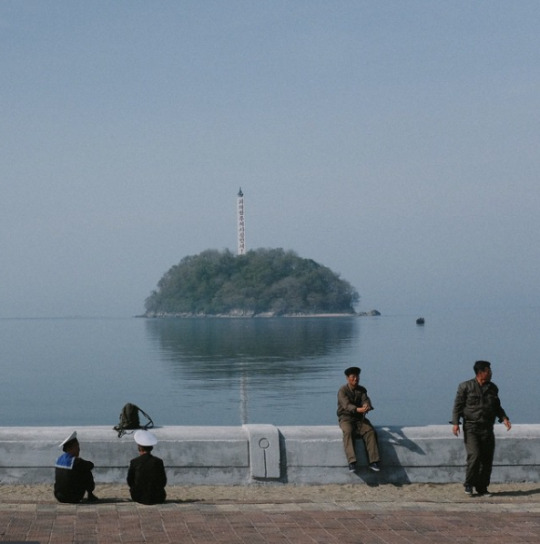


Wonsan, a rebuilt seaside city.
The city of Wonsan is a vital link between the DPRK's east and west coasts, and acts today as both a popular holiday destination for North Koreans, and as a central location for the country's growing tourism industry.
Considered a strategically important location during the war, Wonsan is notable for having endured one of the longest naval blockades in modern history, lasting a total of 861 days.
By the end of the war, the U.S. estimated that they had destroyed around 80% of the city.
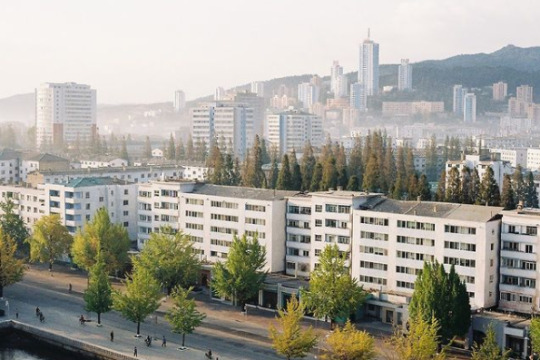
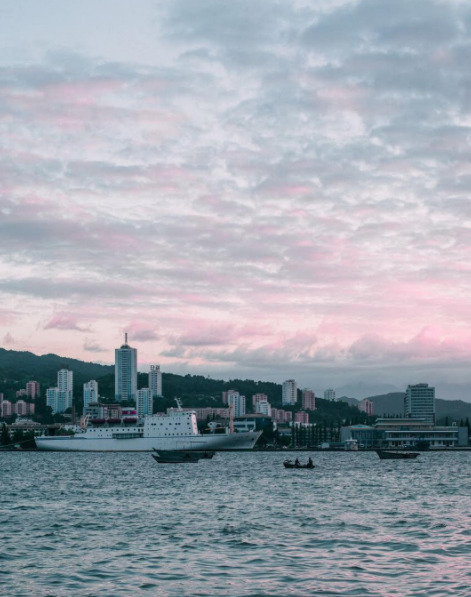
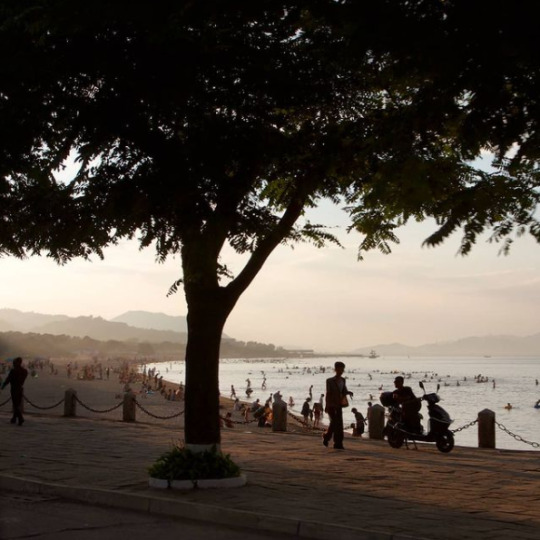
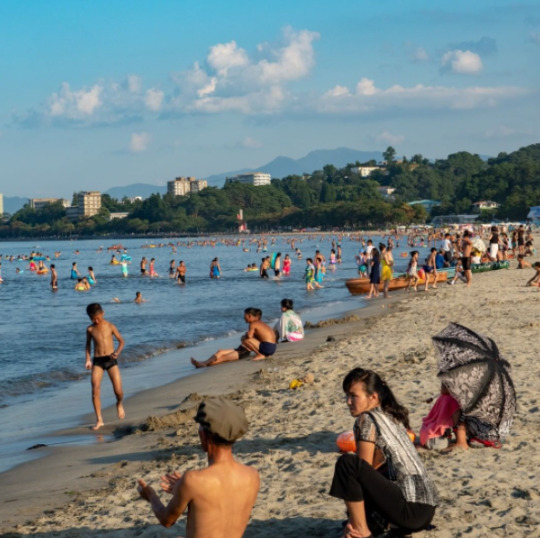
Masikryong Ski Resort, located close to Wonsan. It opened to the public in 2014 and is the first, I believe, that was built with foreign tourists in mind.
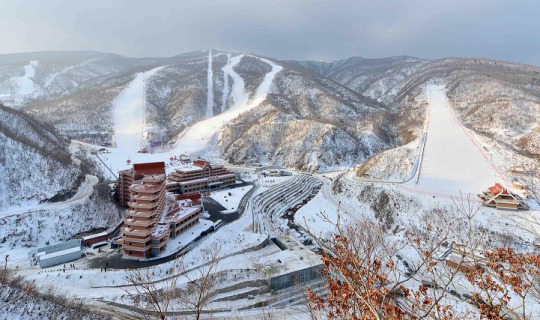
Sariwon, another rebuilt city
One of the worst hit cities during the Korean War, with an estimated destruction level of 95%.
I've written about its Wikipedia page here before, which used to mockingly describe its 'folk customs street'—a project built to preserve old Korean traditions and customs—as an "inaccurate romanticized recreation of an ancient Korean street."
No mention, of course, of the destruction caused by the US-led aerial bombings, or any historical context at all that could possibly even hint at why the preservation of old traditions might be particularly important for the city.
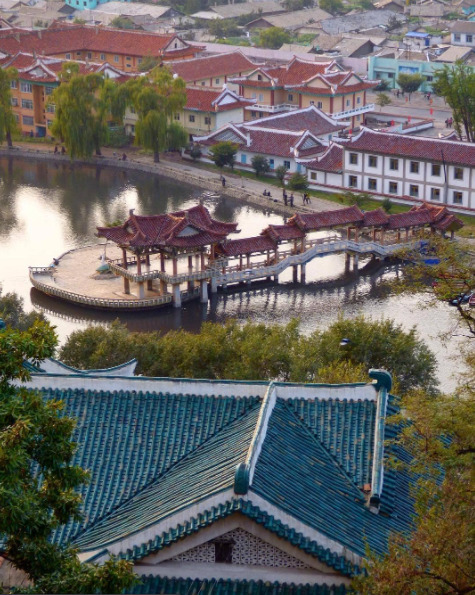

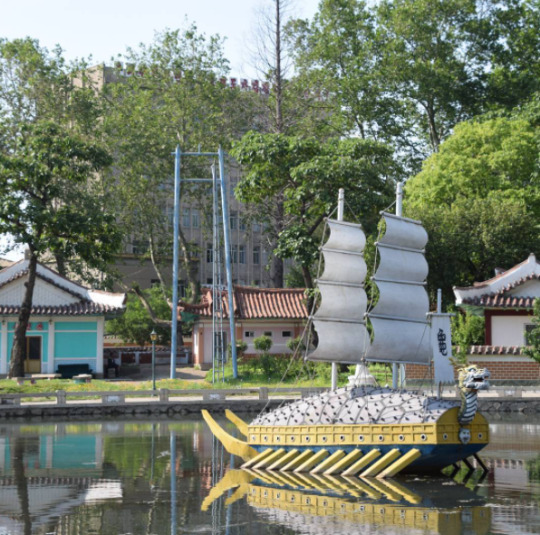
Life outside of the towns and cities
In the rural parts of the DPRK, life primarily revolves around agriculture. As the sanctions they're under make it difficult to acquire fuel, farming in the DPRK relies heavily on manual labour, which again, to avoid food shortages, requires that a large portion of the labour force resides in the countryside.
Unlike what many may think, the reliance on manual labour in farming is a relatively "new" development. Up until the crisis of the 1990s, the DPRK was a highly industrialized nation, with a modernized agricultural system and a high urbanization rate. But, as the access to cheap fuel from the USSR and China disappeared, and the sanctions placed upon them by Western nations heavily restricted their ability to import fuel from other sources, having a fuel-dependent agricultural industry became a recipe for disaster, and required an immediate and brutal restructuring.
For a more detailed breakdown of what lead to the crisis in the 90s, and how it reshaped the DPRKs approach to agriculture, check out this article by Zhun Xu.

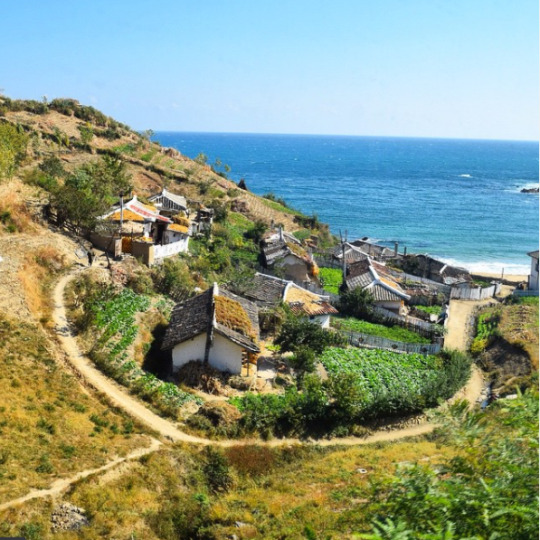
Some typical newly built rural housing, surrounded by farmland.
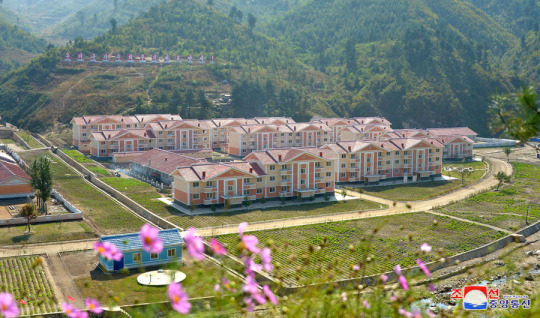
Tumblr only allows 20 pictures per post, but if you want to see more pictures of life outside Pyongyang, check out this imgur album.
#dprk#north korea#i've had this post unfinished in drafts for almost a year#also sorry about the spelling and potential formatting issues it's a nightmare to edit at this point#it was literally just meant to be a collection of picture and then the writing just sort of happened#enjoy the brief heritageposts history lesson i guess
6K notes
·
View notes
Text





bought the dlcs, ive been doing naked crusade runs on my new save and it cracks me up every time
#cult of the lamb#cotl#cotl narinder#cotl lamb#cotl leshy#my art#i dont really want to tag nuditiy bc its literally what they look like in game#i JUST THINK THEYRE FUNNY#they just gotta let loose you know#tw blood#cw blood#narilamb#sort of i always forget that tag tho
4K notes
·
View notes
Text

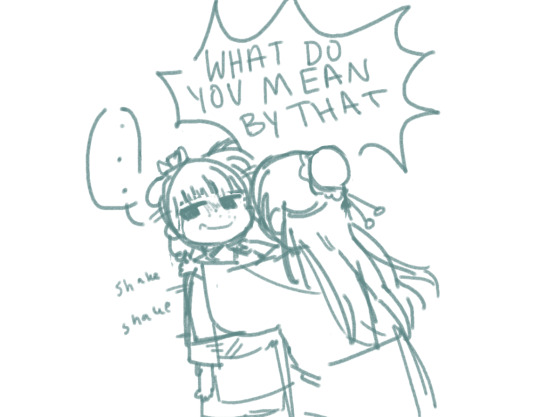
exactly what you think it means
#my art#the apothecary diaries#apothecary diaries#knh#kusuriya no hitorigoto#knh maomao#maomao#jinmao#<kind of. like not really but sort of.#im sure this joke has been made like a billion times but i saw this and i was like literally her...#1k
5K notes
·
View notes
Text
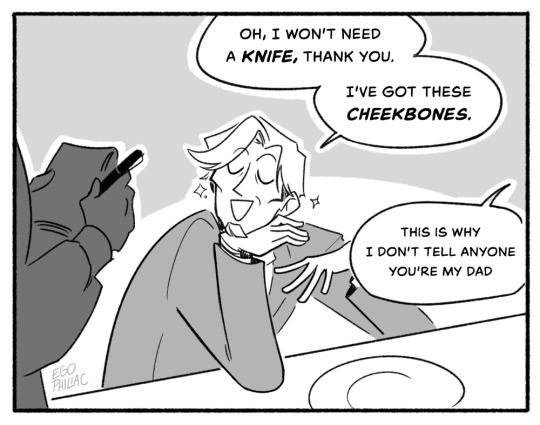


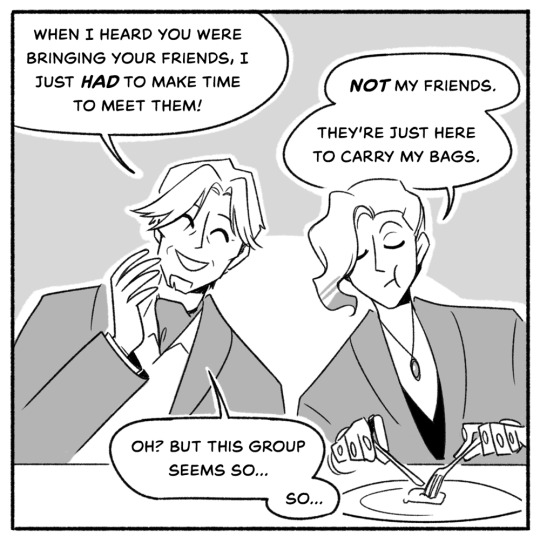



IT WAS ERIC AFTER ALL!!!! I'm so glad we got to meet him (before Vil snaps him away with those Infinity Gauntlets) (can't wait to see what happens when we get the matching Infinity Tiara to go with them, there will be no survivors)
(sorry to be so slow/rough lately, just got a lot of stuff on the ol' brain at the moment! alas, if only I could spend all my time drawing incredibly stupid characters I mean I do but)
#art#twisted wonderland#twisted wonderland spoilers#tapis rouge#i know these are not my best but by god i needed to draw ~daddo venue~#he is a treat! can't wait for him to yell at us for screwing up a shoot or whatever the last-minute disaster will be#i am SO HAPPY it turned out to be about movies after all! ...i mean sort of anyway#i'll take what i can get (and i do enjoy twst trying to be all cute about snow whAHEM i mean beautiful queen) (i see you there twst)#(also to be fair it actually wasn't poisoned in historial-revisionism-twstland so i think we can trust this apple. a+ acting eric)#anyway we are still. very solidly in the 'stand around and talk about the wallpaper for three hours' part of the event.#but HEY we got to meet eric! i was not really expecting it to be him so i am VERY pleased#also god help me i did think the shopping montage as portrayed by a rhythmic where they literally SKIP down the street was hilarious#there's a lot of Choices that were made in this event and that was a good one
5K notes
·
View notes
Note
do you have an in-depth background for Dorian? I loved the comic with his family members, and it made me wonder about his entire life story!! what is his relationship with his siblings!!! why did he start adventuring!!! dorian is not my bg3 character but I love him as a son
he comes from a huge family of wood elf rangers and he was. a handful



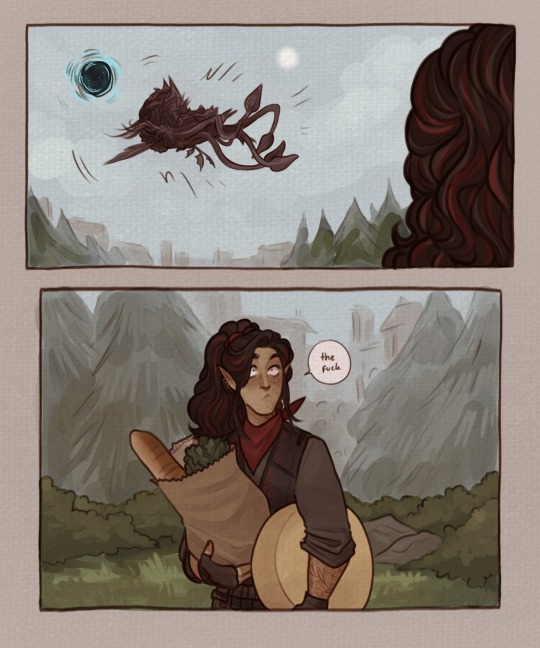
also the whole adventuring thing was a complete accident
he was just walking home and got zapped by the nautiloid
#art#bg3#baldur's gate 3#tav#he is our collective son#i think he’s very very close to all his sisters but especially the oldest because there’s 12 years between them#so she was sort of a third parent? not in a bad way though#i always figured he was one of the civilians taken from baldur’s gate in the opening cutscene#he really wasn’t supposed to be an adventurer he’s literally just some guy
5K notes
·
View notes
Text

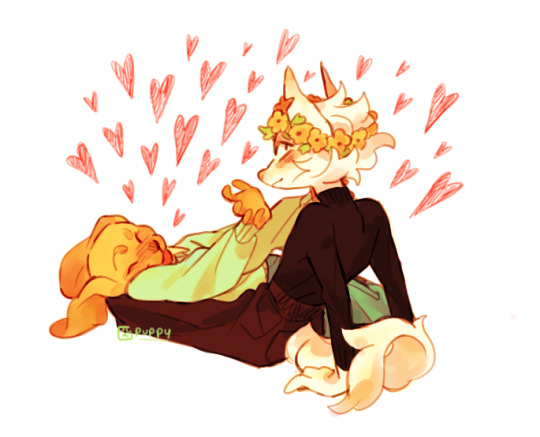
these two are so interesting to me
characters belong to @canisalbus
#clenches fists. im so sosososo normal about them. i think about them a normal amount (lying)#actually the 2nd image is based on some sort of anime couple pose template(?????) that i saw a while back and wanted to draw them in it#but i swear to god i CANNOT FUCKING FIND IT. i was literally knee deep in yuri and yaoi fanart for hours trying to find that god damn photo#but i dont even know who the characters were and pinterest just shows me bakugou and deku making out sloppy style whenever i try#so i gave up an tried drawing it from memory and cried the whole time. i hate anatomy.. but they look so happy so its fine#god whenever i see Lore or sweet little tidbits for these two i want to tear into something with my teeth and throw something /pos#i genuinely want to study these gay little renaissance dogs under a microscope#what fucks me up is the fact that we all know it ends horribly but u cant help loving them anyway.. they are so. incoherent hand gestures#my art#myart#others ocs#vasco#machete#vaschete#furry art#fur#anthro
5K notes
·
View notes
Text

hey guys doing this funny thing where I draw klance once for nostalgic purposes. I hope it doesn’t incite a year-long fixation or anything haha.
#hm.#anyway! happy one year of heynhay klanceposting!#Voltron#vld#klance#Keith kogane#Lance McClain#art#my art#this is like sort of a redraw not a literal one i made it Cooler and Better and more Awesome
2K notes
·
View notes
Text
Tadc..... dinosaurs.... tadc dinosaurs

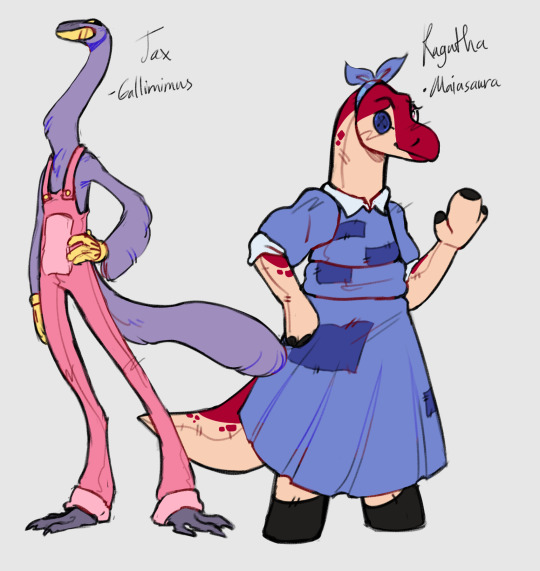
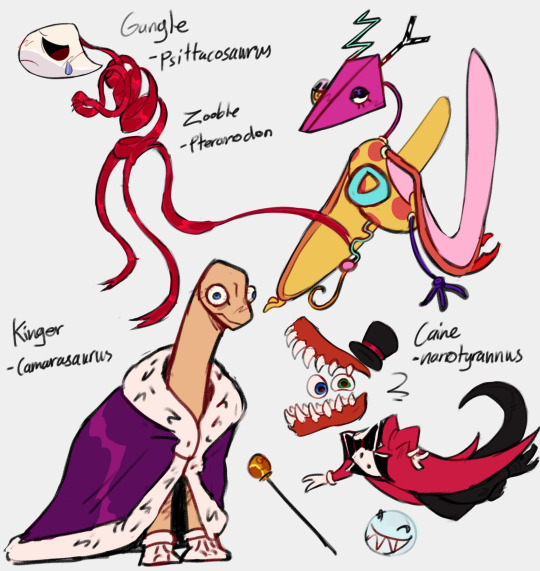
#returning to my roots with this one#proud of the fact that i was able to draw anthro dinos w out fucking it up somehow#finallyyyy#my art#pomnis a dryo cuz theyre smaller and have round features w out being too weak hahhha#jax is a galli cuz theyre tall and are extremely annoying in this one game i play just like him<3 /pos#rags a mai cuz theyre so motherly#i mean the name literally means “good mother lizard”#gangles a psitt cuz they have an intersting face shape for a mask and are small#zoobles a pteranodon cuz they dont fit in not being dinos and everything#like how zooble doesnt fit in much cuz theyre a pile of parts rlly#kingers a camara cuz tall and silly looking /pos#caines a nanotyrannus cuz i wanted him to be a rex of sorts but not biiig#tadc#tadc art#dinosaurs#tadc dinos#the amazing digital circus#tadc fanart#tadc pomni#tadc jax#tadc ragatha#tadc zooble#tadc gangle#tadc kinger#tadc caine
1K notes
·
View notes
Text
People ask me sometimes how I'm so confident that we can beat climate change.
There are a lot of reasons, but here's a major one: it would take a really, really long time for Earth to genuinely become uninhabitable for humans.
Humans have, throughout history, carved out a living for themselves in some of the most harsh, uninhabitable corners of the world. The Arctic Circle. The Sahara. The peaks of the Himalayas. The densest, most tropical regions of the Amazon Rainforest. The Australian Outback. etc. etc.
Frankly, if there had been a land bridge to Antarctica, I'm pretty sure we would have been living there for thousands of years, too. And in fact, there are humans living in Antarctica now, albeit not permanently.
And now, we're not even facing down apocalypse, anymore. Here's a 2022 quote from the author of The Uninhabitable Earth, David Wallace-Wells, a leader on climate change and the furthest thing from a climate optimist:
"The most terrifying predictions [have been] made improbable by decarbonization and the most hopeful ones practically foreclosed by tragic delay. The window of possible climate futures is narrowing, and as a result, we are getting a clearer sense of what’s to come: a new world, full of disruption but also billions of people, well past climate normal and yet mercifully short of true climate apocalypse. Over the last several months, I’ve had dozens of conversations — with climate scientists and economists and policymakers, advocates and activists and novelists and philosophers — about that new world and the ways we might conceptualize it. Perhaps the most capacious and galvanizing account is one I heard from Kate Marvel of NASA, a lead chapter author on the fifth National Climate Assessment: “The world will be what we make it.”" -David Wallace-Wells for the New York Times, October 26, 2022
If we can adapt to some of the harshest climates on the planet - if we could adapt to them thousands of years ago, without any hint of modern technology - then I have every faith that we can adjust to the world that is coming.
What matters now is how fast we can change, because there is a wide, wide gap between "climate apocalypse" and "no harm done." We've already passed no harm done; the climate disasters are here, and they've been here. People have died from climate disasters already, especially in the Global South, and that will keep happening.
But as long as we stay alive - as long as we keep each other alive - we will have centuries to fix the effects of climate change, as much as we possibly can.
And looking at how far we've come in the past two decades alone - in the past five years alone - I genuinely think it is inevitable that we will overcome climate change.
So, we're going to survive climate change, as a species.
What matters now is making sure that every possible individual human survives climate change as well.
What matters now is cutting emissions and reinventing the world as quickly as we possibly can.
What matters now is saving every life and livelihood and way of life that we possibly can.
#hope my reasoning here makes sense#idk I'm just a person who does a lot of research and posting talking about my take on things#I'm not any kind of Real Authority#but still#and for what it's worth the climate and climate transition data I've been following DOES make me confident in this conclusion#I struggled with the line between recognizing the very real damages of climate change#especially on the global south and especially in the last few years#and focusing on the positive instead of regaling you all with depressing situations#especially when there is so much amazing work being done throughout marginalized countries and marginalized groups#literally if rich countries just paid climate reparations and did actual decolonization/landback#a lot of communities could sort out the shit they need to sort out themselves#and/or in alliance and solidarity with each other#or at least most of the things they need to sort out!!#cough anyway#climate change#climate action#climate emergency#climate crisis#global warming#climate solutions#hope#hope posting#not news#me
1K notes
·
View notes
Text
don’t get how you can watch iwtv and be a sincere diehard lestat hater. like the world’s biggest lestat hater is louis and that man can’t even commit to it for more than five minutes before literally hallucinating lestat wearing a wedding ring and talking pretty to him. this show is about louis and every road leads back to lestat for that man
#nobody hates lestat like the men who have brain rot about him#like that’s Claudia’s mother their whole thing is far too messy to be reduced to hate#like sorry that was her mumdadbastardparent. too complicated to get it sorted out right#madeleine didn’t even know him#daniel doesn’t know him (yet)#santiago will bend over for any vampire with more power than him unless they don’t like him#(then he’ll seethe while imagining getting fucked) so in another life he’d dickride lestat or seethe at him and louis hardcore#uhhh. who else knows this bitch. his momma dipped she got her own shit going on she don’t really think about him#maybe Louis’ family are bigger lestat haters but they’re all dead#armand hates him but that’s entirely dwarfed by the sex thing and also he’s way more obsessed with daniel. lestat is not touching that thing#so yeah it’s just louis who knows him deep enough to be a true pure hater#and louis loves him so so so much. so it’s kinda over this show is literally about these two#attacking each other and then holding hands. or punishing the other for 77 years#so. yay!!!#this is not the show for you louis gets the mic for like five minutes n he’s immediately going ‘so there’s this blond-’#like we all didn’t know. get off the stage!!!!!! silence on the blond guy. but alas. louis has the mic still so it’s blond guy central#louis de pointe du lac#ldpdl#lestat de lioncourt#loustat#iwtv#interview with the vampire
1K notes
·
View notes
Text
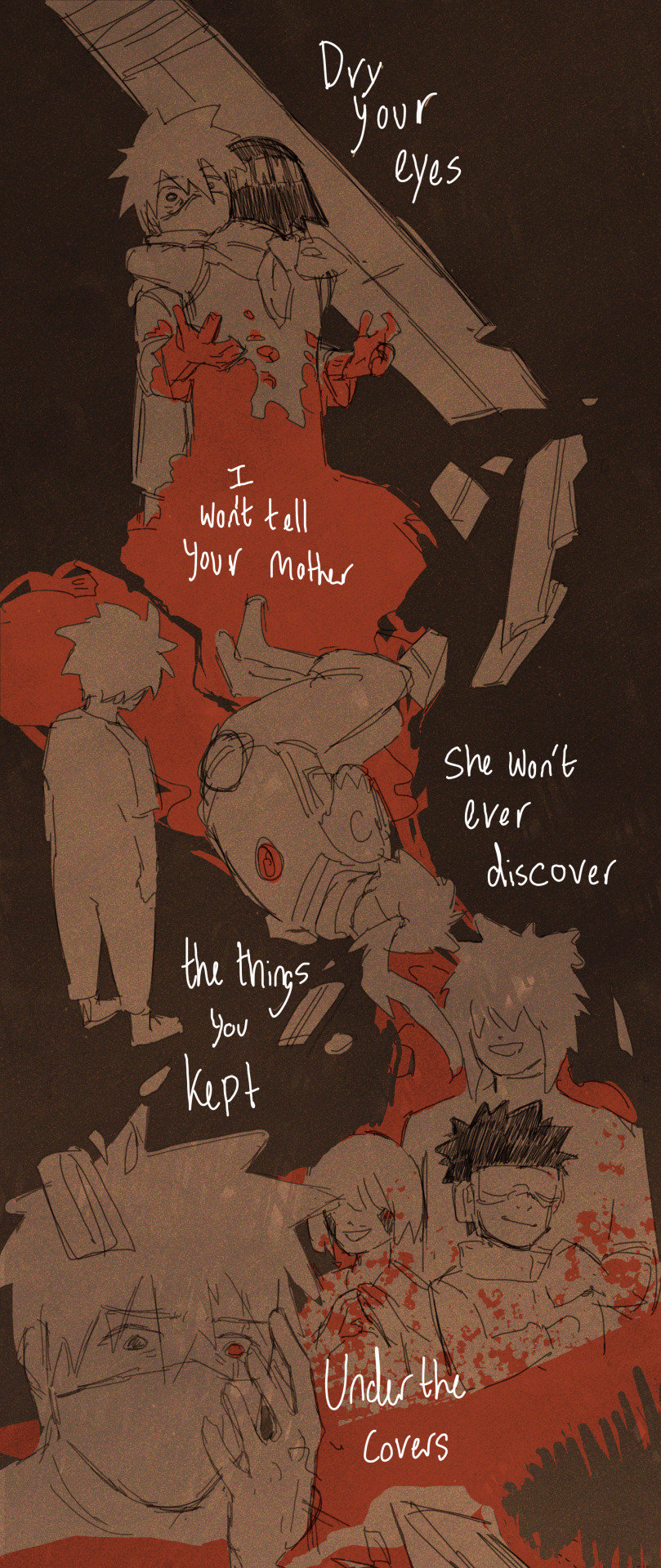

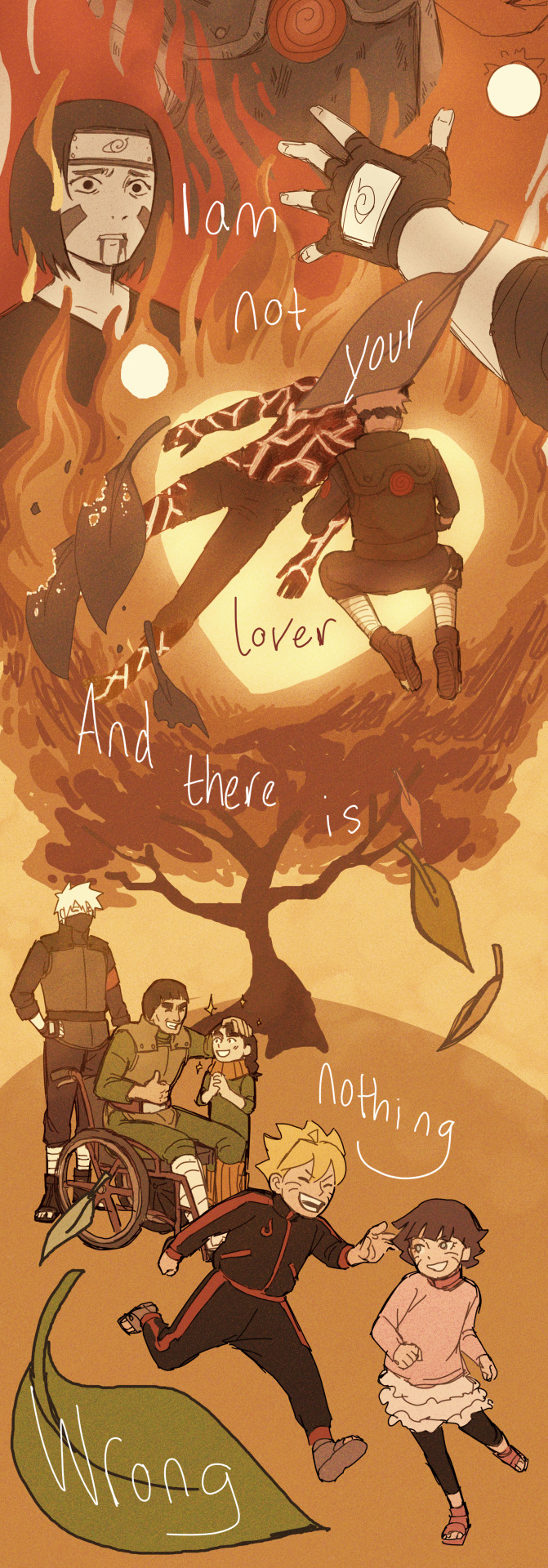
The lyrics here are from Alex G's Gnaw which I feel very strongly is their song.
#kakagai#kakashi hatake#might guy#dont rip into me too hard for how edgy this is bc its literally Kakashi's life lol#comic#sort of ig#yall see the sword of damocles reference though#that was unintentional until like half way through when i noticed it and decided to lean into it#i am once again asking for Tumblr to not destroy the quality#my art
1K notes
·
View notes
Text

I started drawing this next day after I finished Act 6
13 or so days and it's finished!
Main things are traditional and Loop's body was edited digitally after
Unedited it looks like this

I've been torn on how to do Loop's body for the entirety of lining, also

A bit sad the main lines are visible only as a wip, most of this thing is literally just a ton of sharp lines
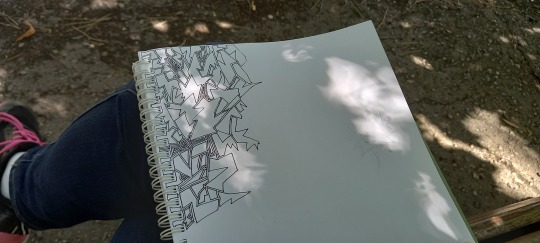
I think it's also my first day of drawing, Loop is just a sketch here (feat. my leg)

I even finished the beans before it so they were a moral support, because if you let me things like this take a year
#fanart#my art#isat#isat fanart#in stars and time#isat loop#loop#traditional art#artists on tumblr#Phew#So anyway this was my way of figuring out my thoughts after finishing the game#I didn't even actually finish it with credits playing at that moment#This type of art is my therapy#And in a way literally how my personality works from big figures to small details of thinking about anything#It's really calming!#I won't tag paper figures but they're here#Like special guests#In any case the funniest thing was showing this to my English teacher and she was like 'wow this looks stressed' or something#Like she immediately looked at the lines and after I showed her my old Flowey drawing like this she was like#'oh it makes sense! This one looks calm but this one is clearly you not feeling good'#Because I was kinda#Like sitting there in the semi-park and feeling sick since morning before I started drawing this and slowly I got better#I already talked about this on my first 'big' isat thing - I needed to think a bit#And not think at the same time just literally letting myself sort stuff out#Like. I fell asleep at 6 am that day and woke up at 10 4 hours of sleep after playing full Act 5 and two hats stuff IS STRESSFUL#SUPER STRESSFUL! Like I felt like I was playing for 4 hours while sleeping#Anyway by the time I finished it aka today I'm feeling way better and I'm literally talking a walk right now#Touching grass as we speak#Anyway phew!#Now to that animatic that's plaguing my mind to draw it nowww
841 notes
·
View notes
Text

ominous ahsoka w predator eyes my love..
can you tell that one post abt togruta having more predatory elements floating around here has affected my mind
#star wars#ahsoka is literally my muse. i cant draw anyone else but her#wnv i put my pen to paper ahsoka emerges fully formed#i have some sort of problem me thinks??#cant even draw my fav chara (anakin) properly 💀#digital art#tamart#art#ahsoka tano#ahsoka#the clone wars#tcw#i am one with the brainrot and the brainrot is with me
2K notes
·
View notes
Text
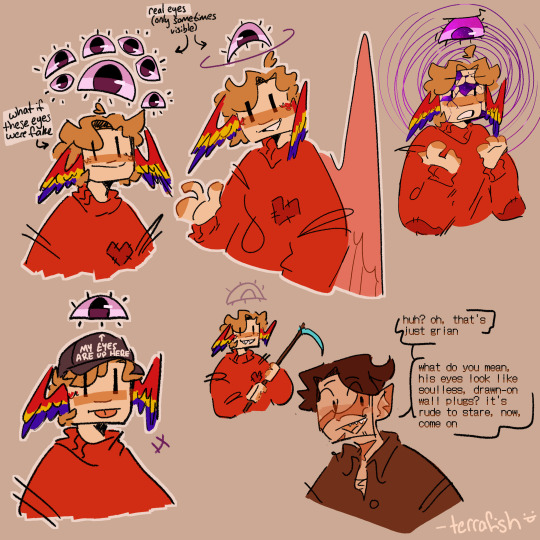
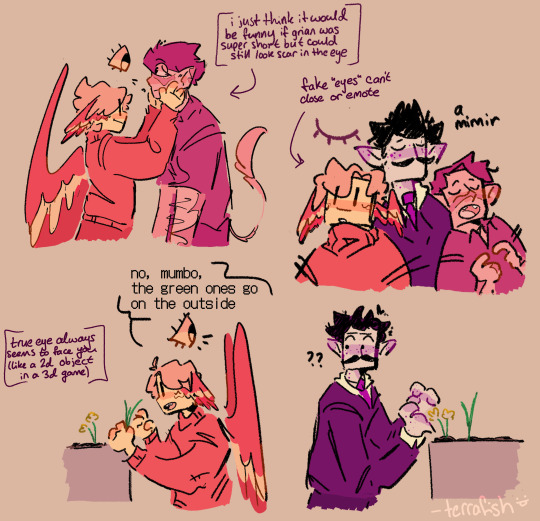
an assortment of silly mimic angel grian doodles (ft. some other buttercup lads)
#i don't know if someone's done this before but i was doodling and bam! this exists now#grian#hermitcraft#mumbo jumbo#goodtimeswithscar#watcher grian#i guess? he sure can Watch#sort of like being in f5 constantly. i think he would pull so many pranks with this#also idk what's up with that one in the corner. his facade is crumbling in the most literal way possible? something like that#aurie's art
5K notes
·
View notes